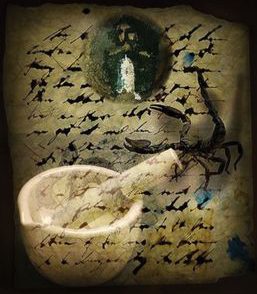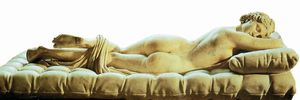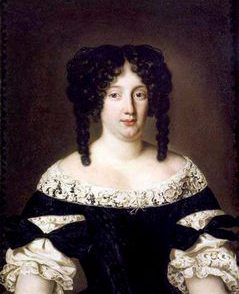The Count of Warwick pays his reverences to His Most Serene Highness the Lord Duke, and he will give me a book in praise of chemistry by Doctor Cornacchino who teaches at Pisa, as well as a certain miraculous powder, which I tried a little of yesterday to my great benefit…
This line from a letter of June 16, 1620, written by Alessandro Senesi, a secretary at the Medici court in Florence, to Caterina de’ Medici, the Duchess of Mantua, refers to an Englishman who had penetrated the inner circles of the Medici family, Robert Dudley.
Born at Richmond Palace in Surrey in 1574, Dudley was the son of Lady Douglas Sheffield and a father after whom he was named but who never legally recognized him: Robert Dudley (1532–1588), the Earl Leicester and the powerful favorite of Queen Elizabeth I of England.
Upon the deaths of his father and his uncle Ambrose, the young Dudley inherited important estates and several titles, including that of Earl of Warwick, the title by which Alessandro Senesi’s letter refers to him. His early career—though he was not very successful at it—was in privateering directed at Spanish galleons in the Atlantic.
However, Dudley’s claims to his paternal legacy were always weak. He did not help his cause when, in 1605, he abandoned his second wife, Alice Leigh (his first wife had been Margaret Cavendish, sister of the famous circumnavigator Sir Thomas Cavendish), converted to Catholicism, and ran off to France to marry his young cousin Elizabeth Southwell—a marriage made possible through papal dispensation.
By 1607 Dudley had reached the Medici court. He ingratiated himself to Duke Ferdinando I de’ Medici by disclosing the secrets of maritime technology, navigation and Atlantic geography to which he had been privy to while in the service of the King of England, James I.
King James I, in the meantime, had declared him an outlaw and confiscated all his estates, eventually transferring Dudley’s titles of Earl of Warwick and Earl of Leicester to other families.
Dudley seems to have embraced his new life in Tuscany, living at Villa Rinieri (now Villa Corsini) at Castello, near Florence. His service to the Medici duke involved designing warships for the Tuscan arsenal and helping in the development of Livorno’s breakwater and harbor fortifications. He also designed a galleon of increased capacity, called a gallerata, for use as a merchant ship, but it did not prove reliable; records from 1615 indicate that merchants in Messina were refusing to load their precious silks onto them.
By 1620, Dudley’s links with the Medici family must have been quite close, for in that year, Archduchess Maria Maddalena von Hapsburg used her influence with her brother, the Emperor Ferdinand II von Hapsburg, to obtain for Dudley the English title of Duke of Northumberland.
The letter from Senesi offers fascinating insight into the unexpected range of ways Dudley made himself useful at the Medici court. It seems that Dudley was dabbling in a rather new form of medicine based on chemical compounds, rather than the simple, traditional herbal mixtures.
His partner in this activity was the doctor mentioned, Marco Cornacchini, who taught medicine at the University of Pisa, and who described the powers of Dudley’s medicinal powder in his book entitled Methodus in Pulverem.
Senesi obviously did not wait to read about Dudley’s ‘miraculous’ new powder but immediately experimented with ‘a little’. And although he does not explain what ailment the substance addressed, he wasted no time letting the movers and shakers in Florence and Mantua know about its ‘great benefit.’







